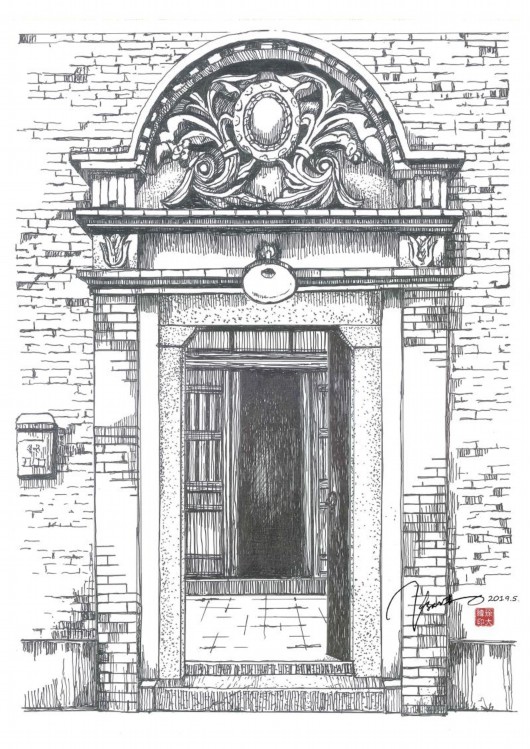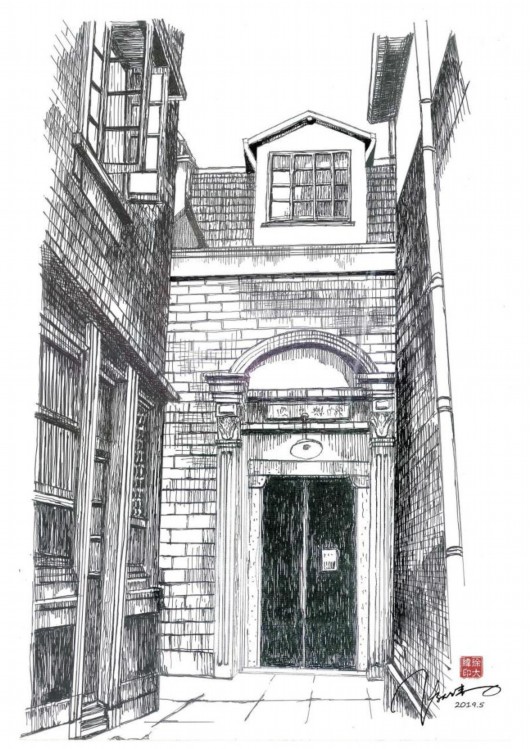While Shanghainese and visitors to the city love to look at and learn about the city’s traditional Shikumen architecture, as most famously seen in Xintiandi, one citizen has taken that admiration to a new level. The retired architect Xu Dawei has done a great job indulging her interest in Shikumen by illustrating the traditional Shanghai architectural style with a fountain pen.

One of Xu’s illustrations depicts “Cite Bourgogne” (Chinese name: Bugaoli), one of the last remaining Shikumen residences in the city. Built in 1930 by French businessmen, it is located at the corner of South Shaanxi Rd and West Jianguo Rd.

Another of her illustrations is of famous gangster Du Yuesheng’s former residence: a mansion composed of a traditional two-storey Shikumen house and a three-storey building fusing southern Chinese and Western styles. Formerly on West Ninghai Road, it has been relocated to Jiading district. The Roman columns of the arched door are adorned with patterns of qilin and phoenix, symbolizing grace and prosperity.

Starting from 1910, Shikumen were constructed with cement, replacing the original solid wood frame. As such, a large number of Baroque-style cement adornments were deployed to decorate the lintels, window sills and gable walls. That marked a watershed between early and late Shikumen.

In a typical Shikumen house, the courtyard is an important space for ventilation and lighting. However, as inhabitants began to expand their narrow living space into the public space, such as setting up water fountains in the courtyard to be enjoyed by all, the area, interestingly, became a vivid part of people’s lives.

Because of the little light that reaches the sides of the longtangs (tightly-packed alleyways), most Shikumen houses have skylights, called laohuchuang (tiger windows), because the English word “roof” sounds like laohu (“tiger”) in Shanghai dialect.

